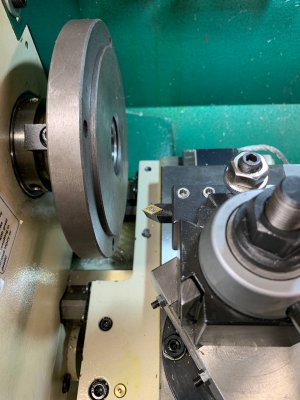- Joined
- Jun 26, 2018
- Messages
- 1,733
I’ll get there with the 4 jaw, but why spend 20 minutes indicating in round bar...that seems like something better suited for a salt centering jaw. I purchased the back plate...2 of them if I’m honest, but one of them I need to open up from a 1” to a 1.75” and thread it, the other plate I just “need” to take a skim cut
off off of...I’m just Thuringia to learn WHY?
off off of...I’m just Thuringia to learn WHY?


